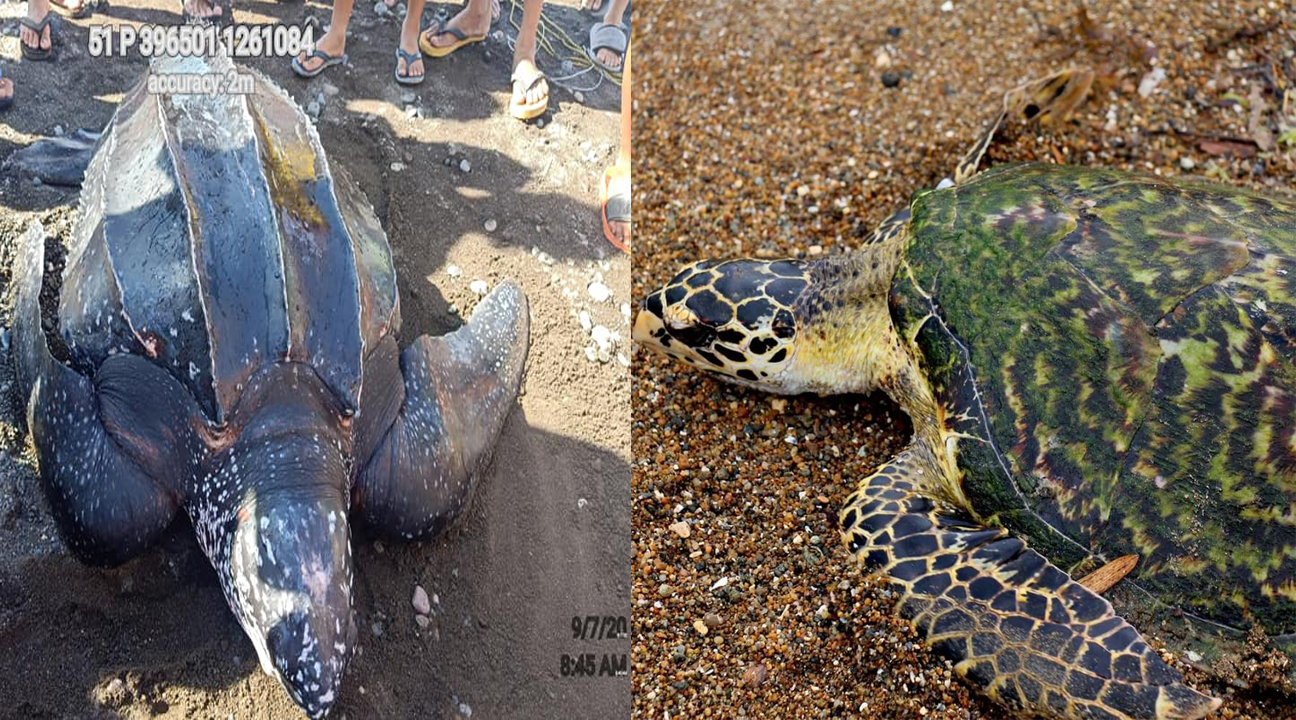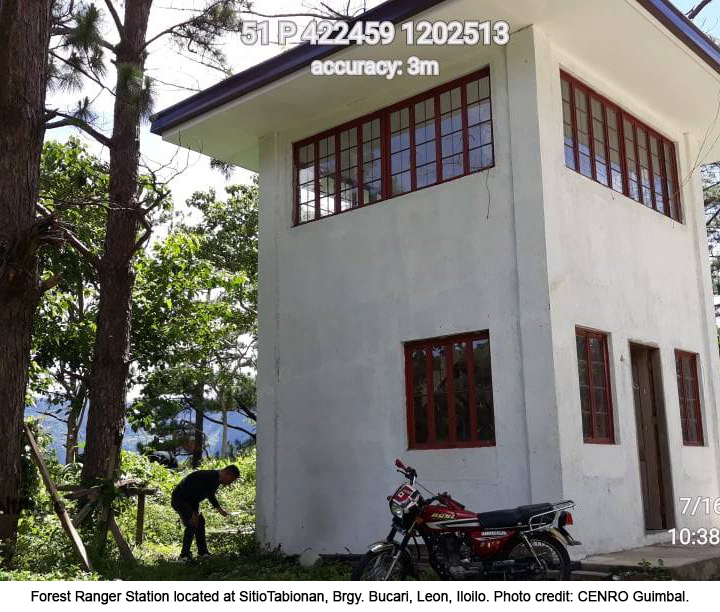LUTE TURTLE RESCUED IN CULASI, HAWKSBILL IN GUIMARAS ISLAND


Left photo shows the Leatherback turtle (Dermochelys coriacea) rescued at Brgy. Malacañang, Culasi, Antique while right photo was the Hawksbill Sea Turtle rescued at Sitio Banacan, Brgy. Cabalagan, Nueva Valencia in the island province of Guimaras.
For hundreds of years, marine turtles lived in the vast oceans but they coexist with humans in many countries and shores each time they visit land.
The Department of Environment and Natural Resources (DENR) had reported many sightings of marine turtles nesting in Western Visayas. Boracay Island, for one, has been tagged as the “turtle haven” because of the simultaneous releases and discovery of turtle nesting sites in the island.
On September 7, 2020, the world’s largest known marine turtle and is the fourth heaviest modern reptile behind three crocodilians, the Leatherback turtle (Dermochelys coriacea), was found and rescued at Brgy. Malacañang, Culasi, Antique by the Community ENR Office in Culasi. The marine turtle was reported by Mark Jay Ortega as it was tangled in fish traps in the area.
It has a thick leathery skin with longitudinal ridges instead of a hard shell. Leatherbacks are the only turtle that does not have a hard shell. It has a curved carapace length of 115 cm and curved carapace width of 82 cm. After tagging, it was immediately released back to the sea. Leatherbacks are also called leathery turtle, lute turtle, or just luth.
Ellen Flor Solis of the Southeast Asian Fisheries Development Center (SEAFDEC) noted that this is the second Leatherback turtle that was reported rescued in Panay Island. Solis had been working with sea turtles rescue for the past 15 years.
Another turn-over, tagging and release were done at Sitio Banacan, Brgy. Cabalagan, Nueva Valencia in the island province of Guimaras on September 9, 2020 to the rescued Hawksbill Sea Turtle (Eretmochelys imbricata). The marine turtle was caught in a net and was reported to the Municipal Environment and Natural Resources Office (MENRO) and Provincial ENR Office of Guimaras.
Hawksbills have narrow, pointed beak. Their overlapping scales on their shells form a serrated look and is the turtle’s distinctive feature. Such colored and patterned shells make Hawkbills highly-valuable and were commonly sold as “tortoiseshell” in markets. They are listed as critically endangered by the International Union for Conservation of Nature’s (IUCN) Red List. Factors that affect their decline include loss of nesting and feeding habitats, excessive egg collection, pollution, coastal development, and they are the most threatened by wildlife trade.
Through the joint efforts of the municipal local government unit of Nueva Valencia, Barangay LGU of Cabalagnan, Nueva Valencia and Provincial ENR Office represented by Environmental Management Specialist (EMS) II Rhett Arthur Diana and other staff from the Taklong Island National Marine Reserve (TINMR), the marine turtle was released back to its habitat
“Turtles are one of the oldest creatures still in existence, with an average life span of 100 years. We laud the efforts of those who helped the release trapped turtles and we continue to urge the general public to help us strengthen the protection of our natural resources – both in land and water,” said DENR 6 regional executive director Francisco E. Milla, Jr.
The protection of marine turtles and other animals are part of the Enhanced Biodiversity Conservation which is one of the ten (10) priority programs of DENR Secretary Roy A. Cimatu./
- Details
- Parent Category: News & Events
- Category: Press Releases








